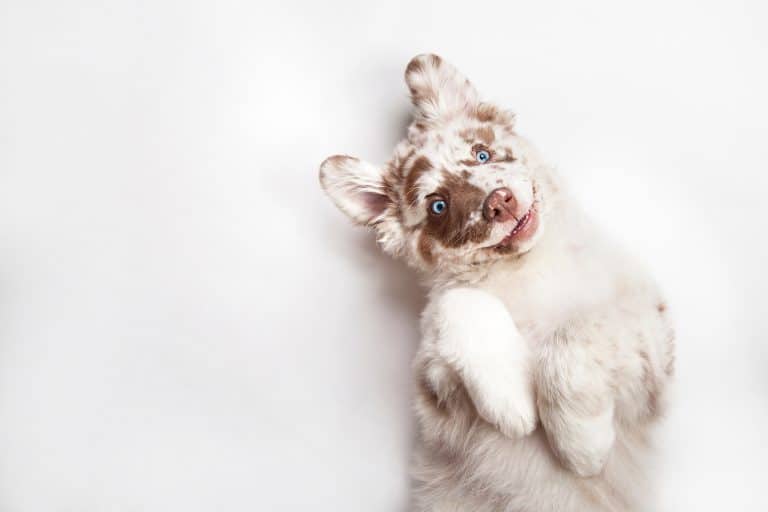Blog New Puppy, Now What?
Bringing a new puppy at home is a pleasure, but often a challenge. Your family environment is the
primary force that creates a puppy’s behavior. Furthermore, what a puppy learns during its first
sixteen weeks of life will play a tremendous role in how he interacts with the family and how he
responds to circumstances and situations encountered over the course of life.
This is a guideline to help you develop a happy, confident, reliable new puppy at home and a great family
companion. Use it in conjunction with the direction of a reputable puppy class. Dog training is both
science and art, so follow these guidelines and you’ll have the best puppy on the block!
PUPPY DO’S – New Puppy At Home:
- Have your new puppy at home examined and vaccinated by a veterinarian as soon as you get him. Not only will this ensure that your pup is free of health problems, but this early interaction at the vet’s office will help him be calmer and more relaxed for future visits.
- Get your puppy a crate. Dogs have an innate desire to den. Crates (preferably the plastic kind) satisfy this natural need. Your puppy should be crated when he can’t be supervised. This will keep him safe, and your home free of “doggy disasters.” When confined, put a high-quality, interactive toy in the kennel for enjoyment.
- Keep the supervised puppy on a leash and collar. This will help you better communicate with your puppy. If you are consistent with this, a puppy will quickly come to love his leash. Praise and reward your puppy for everything he does right. During training sessions, use plenty of food reward with your puppy.
- Get your puppy used to being handled, touched and examined. Clean his ears, brush him and ask your vet or dog trainer to show you how to trim his nails. If your puppy is uncomfortable with being handled, calmly desensitize him to the situation; use plenty of positive reinforcement when the puppy shows correct behavior.
** Your attitude toward the puppy should be persistent, yet kind-hearted; consistent, but always upbeat and fun. Responsible dog ownership, often like raising children, requires fortitude.**
PUPPY DON’TS:
- Do not make excuses or try to justify bad behavior. Puppies do not “outgrow” behaviors, they practice them! If your puppy gets away with an inappropriate behavior that he finds enjoyable (raiding the trash, for example), it becomes validated in his mind as proper behavior and will tend to increase in frequency.
- Do not expect any animal (especially your puppy) to have human motives, feelings, or thought processes. While it is fun for us to think of our puppy as a little person, this can sometimes create confusion and frustration in your puppy. Appreciate your puppy for what he is and you will enjoy and create a great, lifelong relationship.
- Do not allow children to play keep-away, chase, tug o’ war, or general rowdiness. It is a parent’s responsibility to teach children how to interact with their dog, not the dog’s responsibility. Many good dogs are given away or destroyed because of unfortunate and usually avoidable dog bite incidents Involving children. Dogs view the world differently from us, and sometimes dogs perceive our acts of affection as threatening gestures.
PUPPY NEVER’S:
- Never correct a puppy out of anger or frustration. Typically, the only reason a dog will not listen to their owner is due to confusion or disrespect. Either way, it is not your puppy’s fault.
- Never correct a puppy that is coming toward you. Dogs should always associate coming to you with something positive.
- Never allow your puppy to do what a big dog should not do. This includes, but is not limited to: jumping, tackling, mounting, biting, nipping, growling, stealing, etc. If you have any of these problems (and most puppy owners do), seek help now; you’ll be happier and so will your puppy!
- Never coddle or soothe a scared puppy! Doing so will be perceived by the puppy as praise for being afraid. This is how well meaning, caring dog lovers inadvertently turn a great puppy into a “fearful” or “shy” dog. If your puppy shows fear towards anyone or anything, redirect his thoughts via upbeat and excited play. This will quickly put the puppy back in the right frame of mind. When the puppy shows a correct behavior or reaction, let him know he’s right through praise and reward.
- Never forget that a puppy cannot think and reason the way we do. Dogs learn via instinct and repetition in specific situations. So if you find yourself attempting to communicate with your puppy as you would another person, take a step back and look at the situation from the puppy’s perspective.
- Never forget to respect and appreciate your puppy for what he is. He is a dog, and a member of your Family for many years to come — untroubled by the array of emotions, feelings and motives people must deal with. The puppy lives for the here and now. He does not dwell on the past or ponder the future. He will never plot against you, is forever forgiving and will never stop trying to please you if he understands (through your training) what is expected of him. Training is communication. Responsible pet ownership requires that dogs and their families receive instruction and training from reliable sources.

